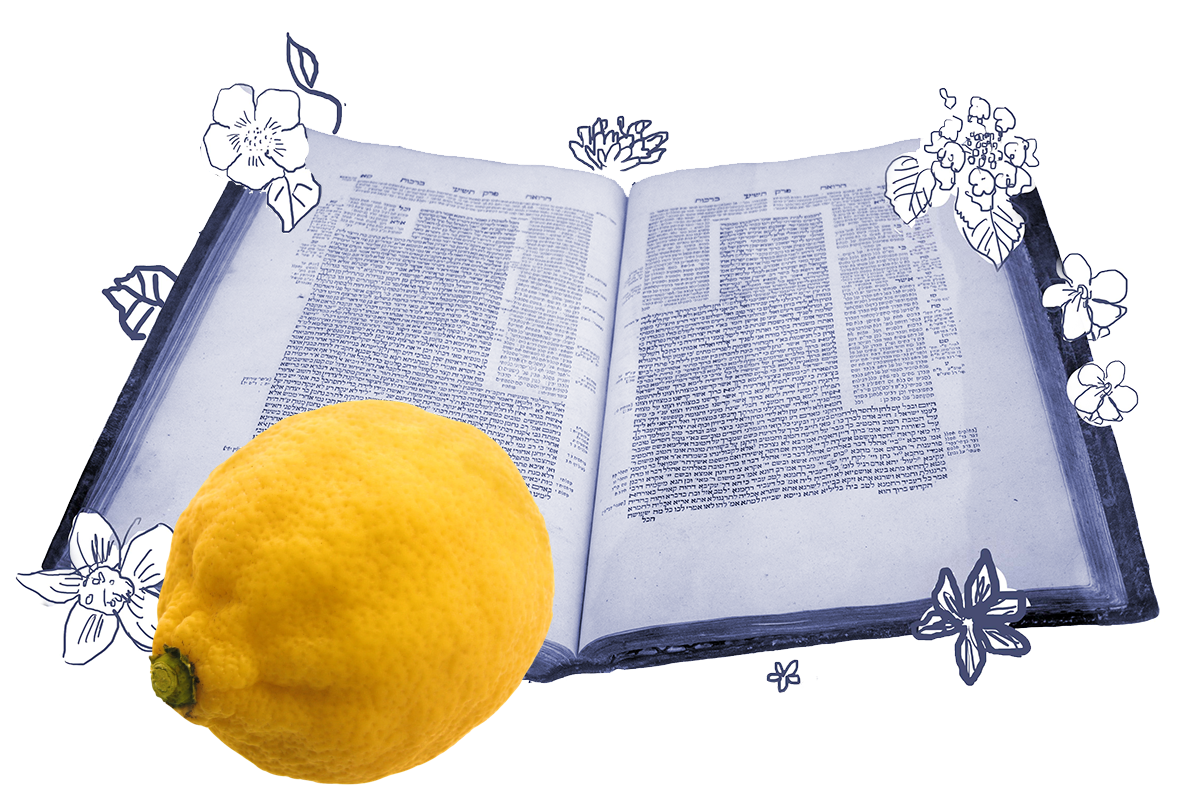As the name implies, Tractate Sukkah deals with the laws specific to Sukkot, one of three pilgrimage festivals on the Jewish calendar. The major biblical commandments surrounding this festival are to build and dwell in a temporary shelter called a sukkah (Leviticus 23:42) and “take” four species, later understood to be the lulav and etrog (Leviticus 23:40). The tractate elaborates these laws and also delineates many other laws of Sukkot not found in the Torah that seem to have entered Jewish practice by the Second Temple period and were considered by the rabbis to be “halakhah from Moses at Sinai.” These include surrounding the altar of the Temple with willow branches and the water libation made in the Temple only on Sukkot.
Sukkot is unique among the Jewish holidays in many respects. Unlike Passover, which commemorates the dramatic exodus from Egypt, and Shavuot, which celebrates the arguably even more dramatic revelation at Sinai, Sukkot reenacts the strenuous and more prosaic wandering of the Israelites through the wilderness for 40 years. Perhaps for this reason, its agricultural dimensions, celebrating the harvest and praying for the next season of rain, feel more pronounced. It also takes on a more universal dimension than other holidays because those prayers for rain, as the rabbis note, do not just benefit Israel, but the entire world.
The Torah refers to Sukkot as z’man simchateinu, the “season of our rejoicing,” and the rabbis describe a celebration at the end of the festival in the Temple that lived up to this label — a final night time carnival of music and dancing, illuminated by enormous torches that lit up the whole city. A mishnah toward the end of the tractate declares: “One who has not seen the rejoicing of the place of water-drawing has never seen rejoicing in their life.”
The first chapter of Tractate Sukkot describes the rules for building a kosher sukkah. A sukkah should be durable enough to dwell in, but flimsy enough to be considered a temporary structure. It must be tall enough that one can actually fit into it, but not so tall that its occupants are not sitting in the shade of the s’chach, the branches that cover its roof. In this chapter and the next, it becomes clear that the s’chach is the essential part of the sukkah, with both significant spiritual force and special practical requirements (for instance, s’chach must be made from organic matter that is no longer rooted in the ground, so it is not susceptible to impurity).
The second chapter deals with the biblical requirement to dwell in the sukkah for seven days. The rabbis determine that this means both eating and sleeping in the sukkah, but they are lenient in many respects — allowing people to leave their sukkah if they need to travel for work or even if a sudden rainstorm ruins their meal. The requirement to dwell in the sukkah is found to be a positive, time-bound mitzvah, which means that it is incumbent only on adult Jewish men (not women, children or slaves). But there are some voices in the text that push against this idea and seek to include women and children in the obligation.
Chapter three deals with the four species, whose precise identity is unclear from the biblical text. The rabbis identify the pri etz hadar, the “fruit of the tree of beauty,” as an etrog, a fruit completely foreign to the land of Israel that originally hails from China. True to the name, the four species are meant to be beautiful and the rabbis spend time determining what this means in terms of size, color and blemishes.
In the fourth chapter, we move into a description of Temple practices, beginning with two rituals that are not found in the Torah. The first is the ritual of surrounding the altar with willow branches, which means both positioning branches upright around the altar and also parading them in a circular pattern. The second was the pouring of water on the altar as a libation. As this chapter describes, it was drawn from the nearby Siloam pool with great fanfare (literally: trumpet blasts).
Finally, the fifth chapter concerns the ecstatic celebrations in the Temple that capped off the festival and the enormous number of offerings the festival required — 70 bulls in all, which commentators suggest are given on behalf of the 70 nations of the world.
With its interplay between historical and agricultural commemorations, particular and universal themes, exploration of liminality and fragility side-by-side with uncontrolled joy, the Sukkot festival this tractate describes is truly unique among Jewish celebrations.
The post Summary of Tractate Sukkah appeared first on My Jewish Learning.




